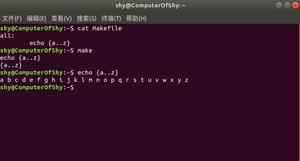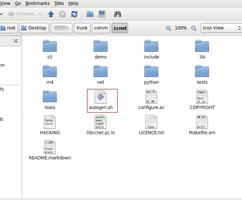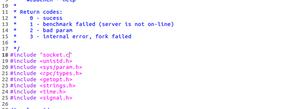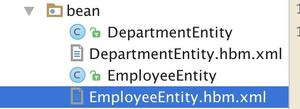创建linux make / build文件
我正在将C ++项目从Windows迁移到Linux,现在需要创建一个build / make文件。我以前从未创建过build /
make文件。我还需要包含Boost库以使其更加复杂。
那么创建Linux c ++ make文件的基础是什么,以及如何在其中合并Boost库以使其正确链接?
到目前为止,我的makefile看起来像这样。我认为CFLAGS并且LDFLAGS是编译器和优化选项,但不能完全确定。
CC = g++CFLAGS = -wall -o3 - c
LDFLAGS = -03 -mfp-rounding-mode=n
我提供赏金是因为我仍然很失落。万一有人冒险,我需要在linux中编译以下内容
- simple_ls.h
- simple_ls.cpp
- 2dquicksort.h
- 原始文件
- rawr.cpp
- converter.cpp
simple_ls.h中的标头:
#include "boost/filesystem/operations.hpp"#include "boost/filesystem/path.hpp"
#include "boost/lexical_cast.hpp"
#include <iostream>
#include <vector>
#include <string>
#include <algorithm>
2dquicksort.h中的标头:
#include <stdio.h>#include <ctype.h>
#include <iostream>
rawr.h中的头文件:
#include <iostream> // not required by most systems#include <fstream>
#include <iomanip>
#include <cstdlib> // or (stdlib.h) for exit()
#include <cmath>
#include <vector>
#include <limits>
#include <string>
回答:
什么是 Makefile ? (适用于 Boost项目)
Makefile背后的根 思想是:
要建立目标,我们需要 (其他目标!)和建立
回答:
它们是文件,文件夹或伪造的目标(通常在中.PHONY)。测试文件/文件夹的存在和修改日期。
如果目标没有任何先决条件或比任何先决条件还旧,则需要重新构建目标。
回答:
指令是 ,从一个选项卡开始。每条指令行都是一个shell实例。当当前命令以反斜杠结尾时,可以在下一行继续执行shell命令\。
回答:
目标是 或 。
依赖关系:
target : prerequisite1 prerequisite2 prerequisiteN规则:
target : prerequisite1 prerequisite2 prerequisiteN instructions1
@hidden_batch1 ; \
hidden_batch2
在说明开始前带有选项卡。
回答:
调试Makefile可能会让人头疼。尝试在Makefile中执行以下操作以显示跟踪(带有的文件和行位置warning):
$(info Shell: $(SHELL))$(warning CXX: $(CXX))
当您的Makefile包含很多嵌套if/else/endif并且您不确定当前路径是什么时,这将很有用。
回答:
理想的makefile结构为:
- 变量设置
- 目标/依赖声明
一旦了解了整个Makefile及其包含文件(存储在make内部数据库中),便开始真正的目标指令处理。
例
最后,使用Boost将理论应用于该特定示例,并创建伪造的源文件进行说明。
回答:
#include "rawr.h"回答:
#include "rawr.h"回答:
#include <iostream>#include "rawr.h"
#include "simple_ls.h"
#include "2dquicksort.h"
#include <boost/array.hpp> // Boost!
int main(int argc, char **argv)
{
boost::array<int,4> a = { { 1, 2, 3, 4} };
std::cout << a[1] << std::endl;
return 0;
}
回答:
如果您Makefile从 stack 复制源,请不要忘记用真实的Tab代替空格:
sed -i~ -e 's/^ /\t/' MakefileMakefile来源:
## Makefile for C++ project using Boost#
# @author Cedric "levif" Le Dillau
#
# Some notes:
# - Using ':=' instead of '=' assign the value at Makefile parsing time,
# others are evaluated at usage time. This discards
# - Use ':set list' in Vi/Vim to show tabs (Ctrl-v-i force tab insertion)
#
# List to '.PHONY' all fake targets, those that are neither files nor folders.
# "all" and "clean" are good candidates.
.PHONY: all, clean
# Define the final program name
PROGNAME := converter
# Pre-processor flags to be used for includes (-I) and defines (-D)
CPPFLAGS := -DUSE_BOOST
# CFLAGS is used for C compilation options.
CFLAGS := -Wall -O0
# CXXFLAGS is used for C++ compilation options.
CXXFLAGS += -Wall -O0
# LDFLAGS is used for linker (-g enables debug symbols)
LDFLAGS += -g
# Which Boost modules to use (all)
BOOST_MODULES = \
date_time \
filesystem \
graph \
iostreams \
math_c99 \
system \
serialization \
regex
# Boost libraries' type (a suffix)
BOOST_MODULES_TYPE := -mt
# Define library names with their type
BOOST_MODULES_LIBS := $(addsuffix $(BOOT_MODULES_TYPE),$(BOOST_MODULES))
# Define the linker argument to use the Boost libraries.
BOOST_LDFLAGS := $(addprefix -lboost_,$(BOOST_MODULES_LIBS))
# Feed compiler/linker flags with Boost's
CPPFLAGS += $(BOOST_CPPFLAGS)
LDFLAGS += $(BOOST_LDFLAGS)
# List the project' sources to compile or let the Makefile recognize
# them for you using 'wildcard' function.
#
#SOURCES = simple_ls.cpp rawr.cpp converter.cpp
SOURCES = $(wildcard *.cpp)
# List the project' headers or let the Makefile recognize
# them for you using 'wildcard' function.
#
#HEADERS = simple_ls.h 2dquicksort.h rawr.h
HEADERS = $(wildcard %.h)
# Construct the list of object files based on source files using
# simple extension substitution.
OBJECTS = $(SOURCES:%.cpp=%.o)
#
# Now declare the dependencies rules and targets
#
# Starting with 'all' make it becomes the default target when none
# is specified on 'make' command line.
all : $(PROGNAME)
# Declare that the final program depends on all objects and the Makfile
$(PROGNAME) : $(OBJECTS) Makefile
$(CXX) -o $@ $(LDFLAGS) $(OBJECTS)
# Now the choice of using implicit rules or not (my choice)...
#
# Choice 1: use implicit rules and then we only need to add some dependencies
# to each object.
#
## Tells make that each object file depends on all headers and this Makefile.
#$(OBJECTS) : $(HEADERS) Makefile
#
# Choice 2: don't use implicit rules and specify our will
%.o: %.cpp $(HEADERS) Makefile
$(CXX) $(CXXFLAGS) $(CPPFLAGS) -c $(OUTPUT_OPTION) $<
# Simple clean-up target
# notes:
# - the '@' before 'echo' informs make to hide command invocation.
# - the '-' before 'rm' command to informs make to ignore errors.
clean :
@echo "Clean."
-rm -f *.o $(PROGNAME)
回答:
2dquicksort.hconverter.cpp
Makefile
rawr.cpp
rawr.h
simple_ls.cpp
simple_ls.h
回答:
make clean allClean.
rm -f *.o converter
g++ -Wall -O0 -DUSE_BOOST -c -o converter.o converter.cpp
g++ -Wall -O0 -DUSE_BOOST -c -o rawr.o rawr.cpp
g++ -Wall -O0 -DUSE_BOOST -c -o simple_ls.o simple_ls.cpp
g++ -o converter -g -lboost_date_time -lboost_filesystem -lboost_graph -lboost_iostreams -lboost_math_c99 -lboost_system -lboost_serialization -lboost_regex converter.o rawr.o simple_ls.o
回答:
现在,几乎是最小的Boost程序的结果:
./converter2
没有理由不使用它! 实际上是功能强大的C ++工具箱:)
以上是 创建linux make / build文件 的全部内容, 来源链接: utcz.com/qa/417638.html








